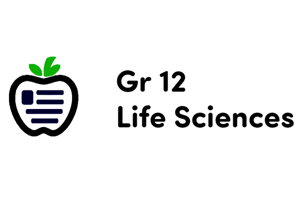Podcast
Questions and Answers
What is the main difference between natural selection and artificial selection?
What is the main difference between natural selection and artificial selection?
Natural selection is controlled by nature, while artificial selection is controlled by humans.
Explain how natural selection occurs in a population.
Explain how natural selection occurs in a population.
Natural selection occurs in all kinds of natural populations and is based on the survival of the fittest.
What types of organisms are usually subjected to artificial selection?
What types of organisms are usually subjected to artificial selection?
Artificial selection is usually performed on pet animals or animals used for economic purposes.
How does artificial selection differ from natural selection in terms of the selection process?
How does artificial selection differ from natural selection in terms of the selection process?
Give an example of natural selection in action.
Give an example of natural selection in action.
How does artificial selection impact the genetic diversity of a population?
How does artificial selection impact the genetic diversity of a population?
What is sexual selection and on what traits does it act?
What is sexual selection and on what traits does it act?
Define polymorphism and how is it characterized in a population?
Define polymorphism and how is it characterized in a population?
Explain artificial selection and provide an example.
Explain artificial selection and provide an example.
How has selective breeding contributed to the development of desirable traits in plants and animals over thousands of years?
How has selective breeding contributed to the development of desirable traits in plants and animals over thousands of years?
Provide an example of a fruit or vegetable that has been improved or created through artificial selection.
Provide an example of a fruit or vegetable that has been improved or created through artificial selection.
How has artificial selection influenced the diversity of dog breeds?
How has artificial selection influenced the diversity of dog breeds?
What is the main difference between natural selection and artificial selection?
What is the main difference between natural selection and artificial selection?
How does natural selection contribute to the evolution of species?
How does natural selection contribute to the evolution of species?
What is directional selection and how does it affect allele frequencies in a population?
What is directional selection and how does it affect allele frequencies in a population?
Give an example of artificial selection in agriculture.
Give an example of artificial selection in agriculture.
Explain how gene flow (migration) can impact genetic diversity in populations.
Explain how gene flow (migration) can impact genetic diversity in populations.
Describe stabilizing selection and its impact on phenotypic variation.
Describe stabilizing selection and its impact on phenotypic variation.
Flashcards are hidden until you start studying
Study Notes
Types of Selection
- Natural Selection: Occurs in a population when individuals with favorable traits are more likely to survive and reproduce, passing those traits to their offspring.
- Artificial Selection: Humans intentionally select for specific traits in a population, often through breeding, to produce desired characteristics.
Natural Selection
- Occurs when environmental pressures, such as predators, climate, or competition, affect an individual's ability to survive and reproduce.
- Favors individuals with traits that provide a survival or reproductive advantage, leading to adaptation and evolution.
Artificial Selection
- Typically involves selective breeding of domesticated plants and animals.
- Examples: dogs, cattle, crops (e.g., corn, apples).
Comparison of Natural and Artificial Selection
- Selection Process: Natural selection is a natural process, while artificial selection is human-directed.
- Selection Pressure: Natural selection is driven by environmental pressures, while artificial selection is driven by human desires.
Examples
- Natural Selection: Peppered moths in England, where moths with dark-colored wings became more common due to the industrial revolution's pollution, providing camouflage on dark tree trunks.
- Artificial Selection: Development of the corn plant from its wild ancestor, teosinte, through selective breeding for desirable traits like larger kernels and sweeter taste.
Impact on Genetic Diversity
- Artificial Selection: Can lead to a loss of genetic diversity in a population as only individuals with desired traits are bred, reducing the gene pool.
- Natural Selection: Can maintain or increase genetic diversity as individuals with diverse traits are more likely to survive and reproduce.
Additional Concepts
- Sexual Selection: A type of natural selection that acts on traits that influence an individual's mating success, such as bright plumage or strength.
- Polymorphism: The existence of multiple forms of a gene or trait in a population, often leading to increased genetic diversity.
- Directional Selection: A type of natural selection that favors one extreme of a trait, leading to a shift in the population's allele frequencies.
- Stabilizing Selection: A type of natural selection that favors average or intermediate traits, reducing extreme variation in a population.
- Gene Flow: The movement of individuals with different genetic traits into a population, increasing genetic diversity.
Studying That Suits You
Use AI to generate personalized quizzes and flashcards to suit your learning preferences.




